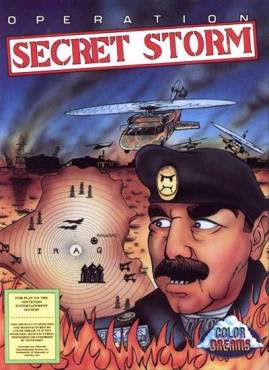 This post is part of "The Sensationalist," a continuing series here at Experience Points in which we examine games' abilities to evoke emotions and sensations in video game players. Please have a look at the series' introduction as well its previous entries. As always, we welcome your thoughts on all the matters we discuss, and look forward to analyzing one of gaming's most powerful, yet intangible, abilities.
This post is part of "The Sensationalist," a continuing series here at Experience Points in which we examine games' abilities to evoke emotions and sensations in video game players. Please have a look at the series' introduction as well its previous entries. As always, we welcome your thoughts on all the matters we discuss, and look forward to analyzing one of gaming's most powerful, yet intangible, abilities.If the Star Fox team, were a basketball team, it would be the equivalent to LeBron James backed up by three members of the Washington Generals. Flanked by Falco Lombardi, Peppy Hare, and Slippy Toad, what starts as a four-person assault on a galactic empire often turns into outer space baby sitting. Some my most vivid memories of the game are of when the missions would take a a sharp, exasperating turn so that I could save my hapless wingmen from deaths caused by their own extreme lack of self preservation. This is not to say that I was always altruistic: Who among us can claim not to have blasted Slippy out of the sky in a fit of rage?
And yet, Star Fox 64 is one of the few games I can recall that elicited a sense of loyalty to my virtual teammates.
The task of making secondary video game characters not only memorable, but empathetic is a difficult task. In many games, the characters serve simply as tools with a thin veneer of personality. In genres like real time strategy, individual characters become faceless pawns in a larger war. While one may make friends in the trenches, few characters inspire any kind of lasting connection.
Games that have successfully unpaired loyalty towards their characters have accomplished it through a combination of narrative and gameplay techniques. To trot out a well-worn example, Aeries' death in Final Fantasy VII was jarring both because I had invested my time in developing her skills and because the narrative invested time in developing her as a pivotal character. Her untimely death served to cement my dedication to the rest of the party and harden my thoughts towards Sephiroth.
Similarly, Team Ico's way of crafting empathetic non-playable characters helps engender in me a sense of loyalty . Yorda and Agro are not directly controllable, but their crucial skills along with their narrative impact inspired a sense to protect and do right by them.

In Star Fox, the skills your wingmen bring to the table are occasionally useful. They add a small amount of depth to the still shallow story, but the game can be played basically as well in their absence. They typically bumble along behind you, shooting poorly, periodically interjecting with useless, annoying dialogue, and shrieking for help whenever an enemy has the gall to fire at them. Certainly, the loyalty I feel towards the Star Fox team has little to do with their skillful piloting or intellectual capabilities.
The loyalty I feel for the Star Fox team speaks to broader issues of socialization and group identity. In a situation in which people work closely together against a larger force or insurmountable odds, the twin threads of of affection and contempt form a uniquely strong bond. Put plainly, belonging to a group tends to confer on its members the right to talk shit about said group. Everyone is guilty of complaining about their crazy family or ragging on their hometown's football team. However, outsiders who would make identical critiques have no legitimacy to do so: Regardless of how bad things are, the members of the group share a unique relationship and exert ownership of their clique, which foments pride and group loyalty.
So while I might roll my eyes when Peppy nags me about barrel rolls, I am on some level fond of the senile old hare. I groan when Falco makes yet another snide comment, but I secretly enjoy his "badditude." I might purposely lob a smart bomb at Slippy as punishment for his incompetence, but deep down I find his earnestness endearing.
I might deride, or possibly outright abuse, my team, but I do so as a member of that team. Solidarity is ultimately exemplified when faced with those who would attack the team from the outside. When those Star Wolf jerks have the audacity to fire on my wingmates, my first thought is "OH NO YOU DIDN'T!"
The Star Fox team might be the Bad News Bears of interstellar combat, but they're my team, and you better believe I'm loyal to them.























